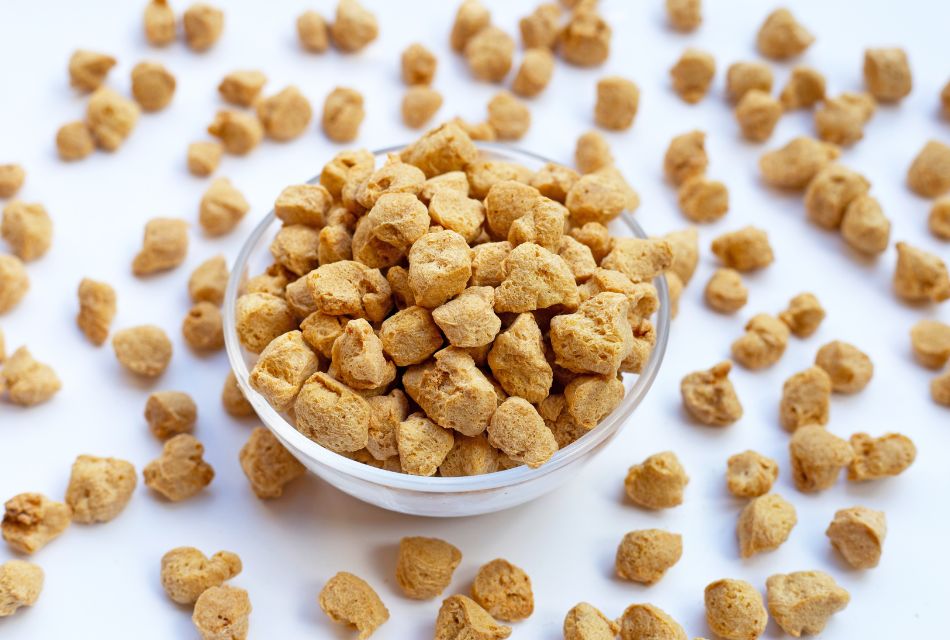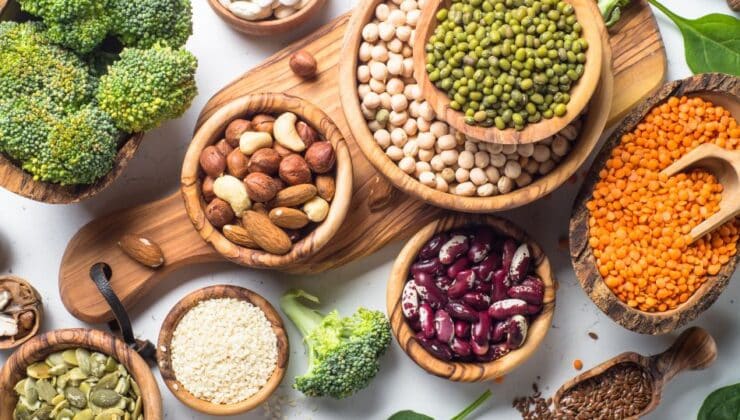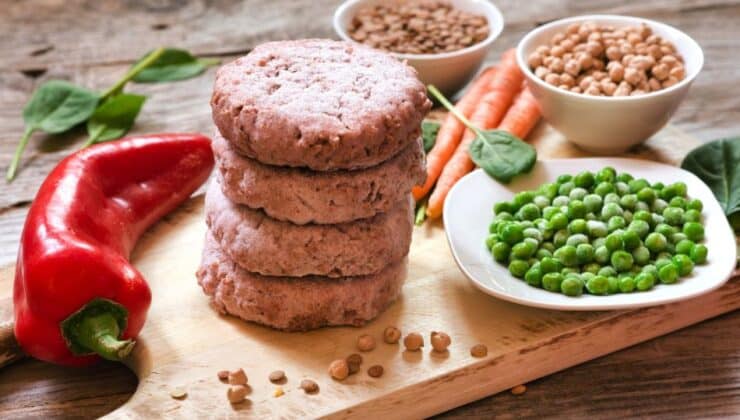Protein, dry or wet, of plant origin is the basis of meat analogues, foods that have the protein content, appearance, texture and taste of meat but without a trace of animal protein. Those whose demand is experiencing an unprecedented acceleration globally.
The texturised vegetable protein, PVT, as a substitute for the animal protein provided by meat and fish, has a long history behind it and a very promising future in which Molendum Ingredients, a subsidiary of the Dacsa Group, plays a leading role.
Molendum offers high quality dry or wet texturised protein for meat analogues, flour, pre-powder, batter, breadcrumbs and natural and heat-treated crispies, intended for the production of products of vegetable origin to improve the yield, juiciness, processing and final texture of the product.
Molendum uses allergen-free raw materials of the highest quality at source, such as peas, lentils and chickpeas, to obtain the best vegetable proteins and offer them to the food industry for the production of plant-based preparations from dry or wet protein.
Molendum’s dry or wet protein comes from the same raw materials that have been processed under different extrusion conditions and are used depending on the product to be produced.
Specifically, vegetable proteins undergo a specific texturisation process in which they are subjected to high temperatures and shear forces to obtain either dry texturised vegetable protein, PVTS, or wet texturised vegetable protein, PVTH, depending on the use to which the vegetable protein is to be put in the various applications that the food industry can develop.
The dried, low moisture texturised protein yields dry, slightly expanded products that must be further hydrated to create a product with a fibrous appearance, bulk density, stable texture and sufficient water holding capacity to produce products similar to meat in protein content, texture, appearance and flavour.
PVTS offers different presentations such as pellets, flakes, chips or steaklets, perfect for making many of the products that consumers can currently find on the market such as texturised pea for stews, sausages or scallops. As for PVTH, Molendum Ingredients is a pioneer in the production, development and marketing of its wet texturised vegetable pea protein, Pesol Pea, which comes out of extrusion at 50 or 60 percent moisture, which allows, in addition to saving time, to control the attributes of the fibration and offer the food industry unique products without competition in the market, more fibrous and expanded products, designed to meet the expectations of those seeking excellence in the production of foods with high nutritional value and a meat or fish appearance, texture and flavour, with magnificent nutritional, organoleptic and gastronomic qualities.
The applications of Pésol Pea, which stands out for its nutritional quality, versatility and performance and is available in different types of cuts, range from meat analogues such as hamburgers, meatballs, sausages, marinated strips, chicken-type nuggets, fish-flavoured nuggets or shrimp-flavoured nuggets, through vegetable bases to vegetable pastas.
In addition, Molendum offers customised PVTH Pésol Pea, both in marinades and flavours, to enhance its customers’ product range.





